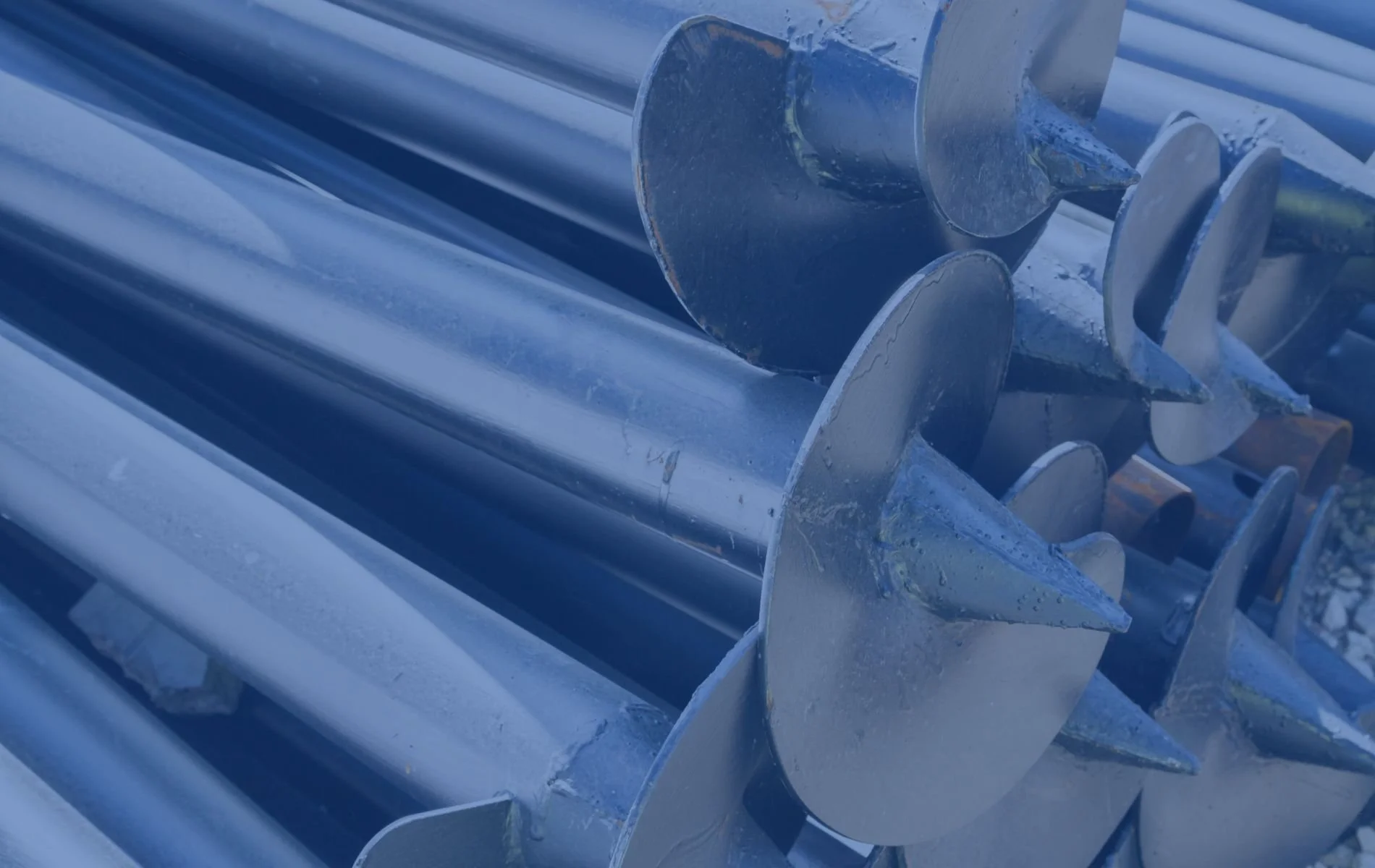Push Piers vs Helical Piers: Which Is Right for Your Foundation?
When it comes to foundation repair, choosing the right method to stabilize and support your structure is critical. Two of the most commonly used solutions are push piers and helical piers. While both are effective, they have distinct differences that make each better suited to specific situations. Understanding these differences can help you make an informed decision for your foundation needs.
Free Estimate!
What Are Push Piers?
Push piers are steel piers that are hydraulically pushed into the ground until they reach load-bearing strata. These piers are designed to stabilize and support structures experiencing settlement due to weak soil conditions. They are often used for poured concrete foundations and other heavy structures.
Push piers rely on the weight of the structure to drive them deep into stable soil. This means they are ideal for homes or commercial buildings with significant mass. Once installed, they redistribute the weight of the structure to the deeper, more stable soil layers, preventing further settlement.
What Are Helical Piers?
Helical piers, also known as helical piles, are steel shafts with screw-like plates, resembling a giant screw. These plates allow the piers to be screwed into the ground, making them suitable for a variety of soil types. Unlike push piers, helical piers can be installed without relying on the weight of the structure.
Helical piers are versatile and used for both residential homes and commercial buildings. They are especially effective in areas with soft or loose soil and can even be used for lighter structures like decks or porches. Their design ensures they reach stable soil, providing excellent load-bearing capacity.
How Push Piers and Helical Piers Are Installed
Push Pier Installation
Excavation: The area around the foundation is excavated to expose the footing.
Pier Placement: Steel push piers are placed under the foundation and hydraulically driven into the ground until they reach stable soil.
Load Transfer: The weight of the structure is transferred to the piers, lifting and stabilizing the foundation.
Helical Pier Installation
Excavation: Similar to push piers, the foundation is excavated to prepare for installation.
Screw-In Process: Helical piers are mechanically screwed into the ground using specialized equipment.
Load Support: Once the piers reach competent load-bearing soil, they provide immediate support for the foundation.
Both methods ensure that the foundation is stabilized and secure, but the choice between the two often depends on the structure’s weight, soil conditions, and the type of foundation.
Pros and Cons of Push Piers
Advantages:
Ideal for heavy structures like poured concrete foundations.
Can be used in areas with limited space for installation.
Offers a cost-effective solution for structures with significant settlement.
Disadvantages:
Requires the weight of the structure for proper installation.
May not be suitable for lighter buildings or structures.
Pros and Cons of Helical Piers
Advantages:
Versatile for both light and heavy structures.
Suitable for various soil conditions, including soft or loose soil.
Can be installed quickly without relying on the structure’s weight.
Disadvantages:
Slightly higher upfront cost compared to push piers.
Requires specialized equipment and trained installers.
Which Option Is Best for Your Foundation?
Choosing between push piers and helical piers depends on several factors:
Weight of the Structure: Push piers are better for heavier buildings, while helical piers work for a broader range of structures.
Soil Conditions: Helical piers perform well in softer soils, while push piers are ideal for stable, deeper layers.
Foundation Type: Both options are suitable for poured concrete foundations, but your foundation’s specific needs will determine the best fit.
Accessibility: If the site has limited access, push piers may be the better choice due to their smaller installation equipment.
Making the Right Choice
The decision between push piers and helical piers ultimately depends on the unique requirements of your project. By understanding the pros and cons of each option and consulting with a trusted foundation repair company, you can ensure your foundation receives the right solution.
Both piers and push piers provide reliable stabilization and long-lasting support. When installed correctly, they can protect your foundation and property for decades to come. Contact Colorado Structural Repair today to learn more about our pier installation services and how we can help secure your home or building.
Trust Colorado Structural Repair To Stabilize Your Foundation!
Ready to address your foundation concerns? Trust Colorado Structural Repair to provide a thorough evaluation and expert solution tailored to your needs. We proudly serve Colorado, including Denver, Colorado Springs, Boulder, Longmont, Fort Collins and surrounding areas. Contact us today to schedule a free evaluation and discover how we can help secure your home’s foundation.
Colorado Structural Repair Service Area
We proudly extend our foundation repair services to the front range of Colorado!
Our experienced team is dedicated to providing tailored solutions to address all of your foundation concerns. Whether you need stabilization, waterproofing, or structural support, we’re here to help.
Find Your Local Service Area Page Below!



